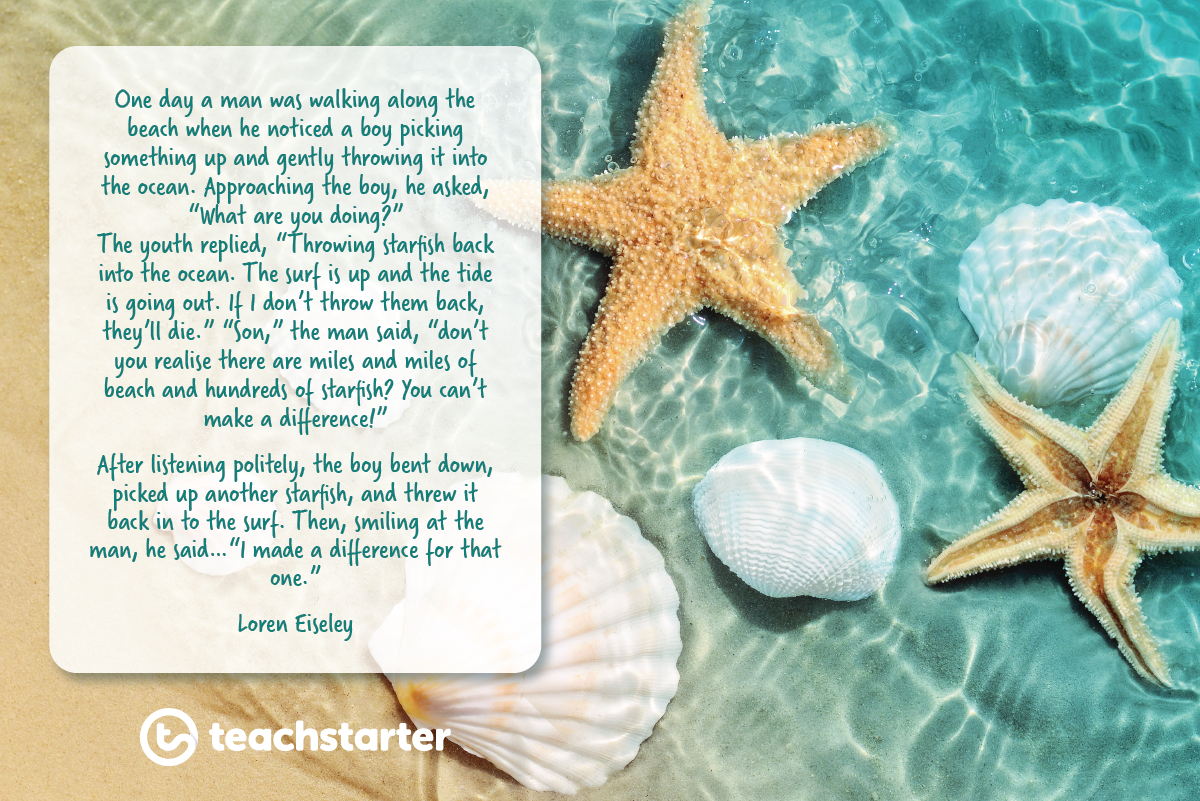Have you ever considered becoming a relief teacher?
When you hear the term relief teacher, what comes to mind? Great money? Reduced responsibility? Increased stress? Out-of-the-loop? Glorified babysitter?
There are heaps of misconceptions floating around the community about the roles of our relief teachers.
As a seasoned relief teacher, I’m here to dispel some of the myths surrounding relief teaching and give you the lowdown on why casual teaching could be a great career step for you.
Defining Relief Teaching
The role of relief teacher has several different names depending on where you’re located. These include: supply teacher, casual teacher, substitute teacher and guest teacher.
Relief teachers are employed by schools on a casual basis to temporarily replace absent teachers. Relief teachers are trained, registered, professional teachers who deliver the curriculum to students.
We’re so much more than a body in a room or a babysitter. We are real teachers.
If you’re already a relief teacher, read our advice for Australian relief teachers.
Who Are Relief Teachers?

Relief teachers come from diverse backgrounds and bring varied experiences to their work.
New Teachers
Many relief teachers are at the beginning of their teaching careers. Education graduates enter the realm of relief teaching:
- to gain further practical classroom teaching experience
- to earn income while they apply for classroom teaching positions
- to enable themselves to travel
- to work in different settings (varied year levels and different school locations).
Experienced Teachers
Some experienced teachers decide to become relief teachers because of a change in personal circumstances. I found myself in this category when, after several years of classroom teaching, I had my first child and returned to the workforce on a part-time basis.
Relief teaching afforded me the flexibility required when parenting a young baby, whilst enabling me to earn an income once my maternity leave had ended.
I loved this experience so much that I ended up relief teaching after having each of my four children, before returning to the classroom when they were around twelve months old.
Veteran Teachers
Experienced teachers approaching retirement also decide to become relief teachers. This allows them to continue to practice teaching whilst:
- travelling
- spending time with family (grandchildren and partners)
- volunteering in the community
- fulfilling their love of teaching when they no longer feel adequately energised to maintain a full-time role.
What Skills Do Relief Teachers Possess?
The role of the relief teacher is very complex and specific, requiring a skill set different to classroom teachers and specialist teachers permanently attached to schools. They are certainly not trying to be given an easy ride.

Relief teachers are able to teach all year levels in their sector. Sometimes, they’ll be booked for a certain grade and then changed at the last minute to another one. Having a solid understanding of the curriculum is essential. Being able to pick up where a teacher left off and seamlessly continue to teach the current class learnings is imperative.
Relief teachers are responsible for keeping their professional knowledge and pedagogical practice current. They attend professional development courses just like classroom teachers, although often they must pay for these themselves, and complete training on weekends
Effective relief teachers are highly organised, punctual and reliable. They exhibit flexibility and cope well with working in unfamiliar environments.
Some days, I’d receive a reservation call at 8.15am for an 8.45am start. As a parent of young children, I had to be highly organised to accept late bookings. Adaptability and a positive mindset are what assure a relief teacher of repeat bookings.
But going with the flow isn’t the only thing you have to focus on.
Challenges For Relief Teachers
Student Behaviour
Turning up to a classroom full of unfamiliar little faces presents its own challenges. Particularly if their teacher is on unplanned leave, and it’s a surprise for them to see a different adult opening the classroom door. Students can feel unsettled and their behaviour will reflect this. They may be anxious, unusually rowdy, or just lacking focus in the absence of their regular teacher. You’ll quickly develop a toolkit of behaviour management strategies to rely on. My advice?
Get a grip.
It sounds harsh, right? But if I can tell you one thing it’s that you’ve got the first fifteen minutes of a relief day to really set the tone for the rest of the day. Make your expectations explicit and exude confidence. If you’re not feeling confident, fake it ’til you make it. Often all it takes to calm an unsettled class is for them to feel comfortable and pick up on your vibe – make it professional and composed.
These resources are great to have in your bag to establish expectations and reward positive behaviour:
[resource:4590][resource:1970742][resource:1970850][resource:1824786]
No Planning?!
Another challenge facing relief teachers is when, for whatever reason, the classroom teacher hasn’t left any planning. Many schools have policies requiring their teachers to provide planning for relief teachers. Teachers will often provide very detailed information about what they’d like taught in their absence, in order to keep their students on track. But sometimes, things crop up and teachers can’t leave plans. Our Relief Teaching Full Day Plans are perfect to have up your sleeve (or saved on your USB!) for times like this.
[resource:152923][resource:153423][resource:151828][resource:150934]
[resource:149845][resource:154225][resource:154398][resource:9436]
School Routines are Different
I remember, on one of my very first relief teaching days many years ago, the panic I felt when, after a late call, I arrived to be told by the neighbouring teacher that the ANZAC Day assembly was to be held that day. At 9am. It was 8.40. Oh, and the class needed to present a wreath. Which the teacher hadn’t yet organised.
These situations can be stressful. It’s so important for relief teachers to keep calm and remain level-headed. I was able to find some art materials and some early kids hanging around outside the door to make a hand print wreath. It wasn’t the last time I had to think on my feet, but the spontaneous and surprising elements of relief teaching are the part I came to love the most!
Great Money or Danger Money?
Relief teachers – not as cashed up as people think.via GIPHY
When I was relief teaching, I felt like I was continually justifying my income to strangers. When I confessed to being a relief teacher, both teachers and non-teachers would say “Great money, isn’t it?”.
Relief teachers earn a casual wage, which is reflective of their work conditions. Due to different enterprise bargaining agreements, relief teacher wages vary by state. Relief teachers are paid an hourly rate for the number of hours worked. There are times of the year when income is sparse (beginning of year) to non-existent (term holidays). Relief teachers have no entitlement to sick leave, so on the balance of things, their incomes are comparable to classroom teachers.
Author Gabbie Stroud shared an anecdote about a conversation with a friend in her book, Teacher:
‘It’s like they’re paying you danger money…It’s like you walk into a hostage situation every day. And you’re the hostage.’
The Starfish Story and How it Relates to Relief Teachers

At the recent Relief Teachers Conference held in Brisbane, educational technologist Chris Betcher, spoke to teachers about how they can have an impact on children’s lives on a day-by-day basis. He used Loren Eiseley’s well-known starfish story to illustrate how, even with limited time, relief teachers have the opportunity to positively affect their students. Make a difference.
How to Start Relief Teaching
Thinking relief teaching may be right for you?
Relief teachers (like any teachers) are required to be registered with their relevant state teacher registration authority, so make sure your registration is sorted.
You can then approach local schools directly to introduce yourself and provide your resume and references. We all know that school offices are hectic places so if you wish to speak with a member of the leadership team, it’s a great idea to phone ahead. However, if you’re happy to chat with the administrative staff, this can also be a great option, as they’re the ones making those early morning reservation calls!
State-by-state, relief teacher reservation systems vary. In Queensland, the Education Department has its own reservation unit, TRACER. In other states, organisations like ClassCover connect relief teachers with schools. Increase your opportunities for bookings by registering with these organisations.







Comments